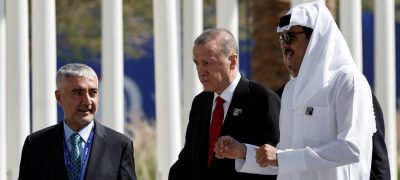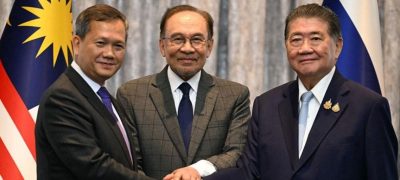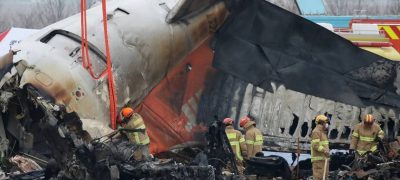Before Russia’s full-scale invasion of Ukraine, many, including Kyiv, doubted that a major war could return to Europe. However, over two years later, conscription is making a surprising comeback. Several European countries have reintroduced or expanded compulsory military service in response to Moscow’s growing threat, as part of broader measures to strengthen defenses, which are expected to increase further.
Robert Hamilton, head of Eurasia research at the Foreign Policy Research Institute and a former US Army officer, noted, “We’re realizing we may need to change our approach to mobilizing for war, producing military equipment, and recruiting and training personnel.” He added, “It’s tragic that in 2024, we’re facing the challenge of mobilizing millions for a potentially brutal conflict, but this is the situation Russia has created.”
Read more: Poland Considers Intercepting Russian Missiles Aimed At Ukraine
Gen. Wesley Clark (Ret.), former NATO Supreme Allied Commander Europe, commented that the risk of a larger European war has risen since Russian President Vladimir Putin “resorted to open conflict” in Ukraine, aiming to “recreate the Soviet empire.” Clark highlighted the urgent need for NATO to rebuild defenses, noting that conscription is part of this effort.
Reintroduction of conscription highlights a new reality
Several European countries discontinued mandatory conscription after the Cold War, but in recent years, many, especially in Scandinavia and the Baltics, have reintroduced it due to the threat posed by Russia. In some nations, failing to enlist can lead to fines or imprisonment.
Latvia is the most recent country to reinstate conscription, starting January 1 this year, after ending it in 2006. Male citizens will be drafted within 12 months of turning 18 or graduating from school.
Arturs Pīlācis, a 20-year-old student who has yet to be drafted but voluntarily completed a month-long military course, noted initial resistance to the reintroduction. However, he acknowledged the necessity of state defense services given the ongoing aggression in Ukraine, saying there was no option to simply continue as before.

In April, Norway unveiled an ambitious long-term plan to nearly double its defense budget and increase its armed forces by adding over 20,000 conscripted soldiers, employees, and reservists.
Prime Minister Jonas Gahr Støre emphasized the need for a defense system that is adequate for the evolving security landscape. Norway, which has had mandatory conscription since 2015 and was the first NATO member to include both men and women equally, aims to bolster its military capabilities.
Jens Bartnes, a 26-year-old economics student who completed his military training at 19, expressed satisfaction with his service, noting it taught him valuable lessons about himself, his limits, and teamwork. He is prepared to defend his country, valuing Norway’s principles of inclusion, equality, and democracy.
Max Henrik Arvidson, 25, who served in the Norwegian military from 2019 to 2020, also views military service as a crucial responsibility. He believes that countering Russian aggression involves supporting Ukraine with weapons and aid while maintaining strong ties with NATO and the European Union.
‘Significant Mental Change’
Discussions on conscription are also occurring in European countries that currently do not mandate it. In the UK, the Conservative Party proposed military service during their unsuccessful election campaign.
Germany is experiencing one of the most unexpected changes. Historically opposed to militarization since World War II, Germany updated its contingency plans for potential European conflicts this year. In June, Defense Minister Boris Pistorius introduced a proposal for a new voluntary military service, stating, “We must be prepared for war by 2029.”

Sean Monaghan, a visiting fellow at the Center for Strategic and International Studies, noted that the intense debate over conscription is a significant first step in a major mental shift. This process does not happen overnight.
In Lithuania, however, there is mixed sentiment about military service among students, according to Paulius Vaitiekus, president of the National Students’ Union. Since reintroducing compulsory military service in 2015 due to shifting geopolitical dynamics, Lithuania enlists about 3,500 to 4,000 young people annually for nine months.
Vaitiekus reported that while students have initiated efforts to support Ukraine, there remains a noticeable shift in youth attitudes toward being more engaged, though not necessarily through conscription.
With conscription still contentious in some nations, NATO is facing challenges in meeting its target of having 300,000 troops ready within one month and an additional half a million within six months. Monaghan explained that while NATO claims to have achieved this goal, the EU acknowledges that member states might struggle.
The reliance on American forces to meet NATO’s targets highlights the need for European allies to find new ways to recruit personnel, as the current targets only allow for a short-term conflict of up to six months.
Models for large strategic reserve forces
One potential solution is a more agile and modern military structure.
Finland, one of NATO’s newest members, can mobilize over 900,000 reservists, with 280,000 military personnel on standby for immediate deployment if needed. Yet, in peacetime, the Finnish Defence Forces operate with just about 13,000 people, including civilians.
“Finland serves as a prime example,” said Hamilton from the Foreign Policy Research Institute. Due to its historical position between NATO and the Soviet Union, Finland needed to maintain self-defense capabilities.
Norway and Sweden, also recent NATO members, use similar models, though not as extensive as Finland’s. Sweden, which has made conscription gender-neutral, drafted approximately 7,000 people in 2024, with plans to increase this number to 8,000 in 2025.
Since the onset of the Ukraine war, there has been a shift in both knowledge and attitudes, according to Marinette Nyh Radebo, communications manager at Sweden’s recruitment agency. Previously, conscription was promoted as a career boost, but now it is framed as a duty to Sweden.

Is NATO prepared for conflict?
NATO has been updating its strategy and enhancing its capabilities over the past decade in response to the escalating threat from Russia.
Following Russia’s full-scale invasion of Ukraine in 2022, which came after its backing of pro-Russian separatists in eastern Ukraine and the annexation of Crimea in 2014, NATO allies have reassessed their readiness for conflict and have worked to bolster their defenses.
“NATO has undergone the most significant transformation in our collective defense since 2014,” NATO spokesperson Farah Dakhlallah told to News Agency. “We have developed extensive defense plans since the Cold War, with over 500,000 troops on high alert.”
However, there are calls for even greater enhancements. Although NATO allies are prepared to respond immediately, questions remain about their readiness for a prolonged conflict like the one in Ukraine. Key areas needing improvement include industrial capacity, defense spending, and societal resilience—where the debate over conscription arises.
Dakhlallah noted that military recruitment and training are decisions for individual nations, with about a third of NATO members having some form of compulsory service. While some members are considering conscription, NATO as an alliance does not mandate it. The focus remains on maintaining effective armed forces to safeguard territory and populations.
In addition to direct conflict, Russia has engaged in hybrid warfare across Europe, including infrastructure attacks, cyberattacks, disinformation, sabotage, election interference, and the weaponization of migration.
The situation may become more complex with the US presidential election in November. Former President Donald Trump, who has suggested leniency towards Russia regarding NATO defense spending, could alter the dynamics significantly.
NATO military leaders understand the need for cooperation, and there is an expectation that young people today, like those of past generations, may face similar burdens. Clark believes that despite the discomfort, democracies will respond to the challenges presented by current circumstances.









